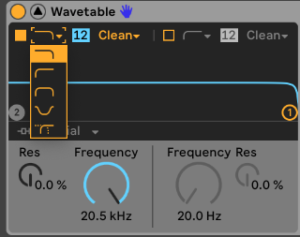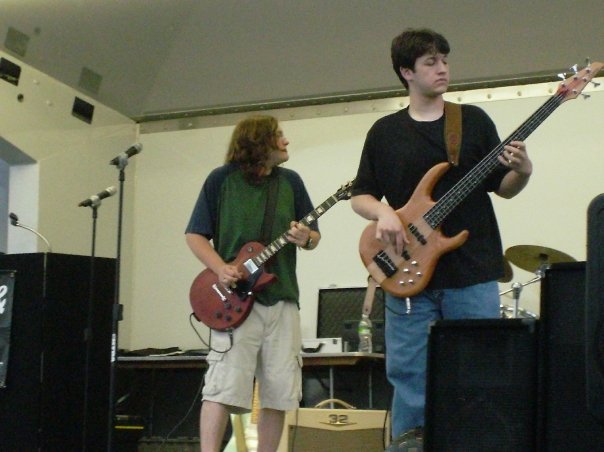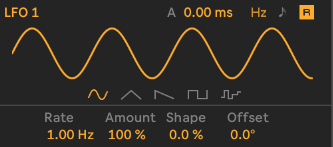While there are different nuances to the various subtractive synths that exist, at their core, they are all essentially the same. What this means is that whatever you are currently working with is probably powerful enough to get the job done for your sound design needs.
Now, if you are having difficulty unlocking the power of the synths that you have, it might be because you have never really thought about each component and what they do. Maybe you aren’t even up to speed on what a subtractive synth is.
What Is A Subtractive Synth?
A subtractive synth models sound by using filters to shape sound created by oscillators. Sounds are further refined, by using envelopes and LFOs to control the shape of the sound over time.
In other words, subtractive synths start with a ton of sound, and create patches by removing parts of the sound; hence the words “subtractive”.
This differs from other types of synths. For example, FM synthesis creates sounds by merging groups of waves together to create new waves.
Additive synthesis, on the other hand, works by skipping the filtering altogether and only creating the frequencies needed for the sound you are making.
All Subtractive Synths Have 5 Parts
All Subtractive synths will have in some way shape or form, these parts.
- Oscillators – Sound generators
- Filters- Removes certain parts of the frequencies created
- Amplifiers-Volume control
- Envelopes- Controls parameters over time
- LFOs – Changes parameters in a constantly repeating pattern
Using just these 5 parameters, the possibilities for what you can create are essentially limitless. Let’s dive in to see what each of these 5 parts do.
Oscillators
Oscillators create sound. They are the part of the synth that generates some very raw basic sounds. Oscillators work by playing a repeating waveform. The most common four are the Sine, Triangle, Saw, and Square waves. Most synths will have at least these 4, but many will have more than this.
That being said, I find that most things are possible using these basic waves.
By the way, I’ve put together a free PDF that outlines each part of these synths and what they do for you. You can download the Quick Synth Map here.
Filters

Filters carve areas of the frequency out. Imagine you are playing a saw wave, which has a lot of upper-frequency harmonics, resulting in a buzzy sound.
Maybe the sound you are trying to create should be a little warmer, which means that it won’t have quite as many upper-frequency harmonics.
Rather than go about trying to choose a different waveform, you can use a low pass filter to remove the upper harmonics and leave the low harmonics intact.
You can also do the opposite and pull out the low-end frequencies, leaving only the higher, more buzzy harmonics intact. This will result in a pretty aggressive rough sound. But it can be great for adding texture to something that is already happening in a song.
Amplifiers
When I think of an amplifier, the first thing that immediately pops into my head is playing in my high school band, “Derek and the Wonderdogs”. The music was good, but arguably the name was questionable.

We had a ton of amplifiers in my friend’s basement and we would play for hours through those amps.
Without them, we wouldn’t have been able to hear much over the drums. This is essentially the same thing that is happening on a subtractive synth
The Amplifier if the part that converts the signal to something that as volume.

Each oscillator will have its own Amp, and there will also be an amp that controls the overall volume.
Having more than one amp allows you to choose how much of each oscillator you are hearing in your final sound, without deafening everyone listening, since you’ll be able to turn the overall volume down. (This is something we never quite figured out during Derek and The Wonderdog Rehearsals).
Modifiers
This is where the magic of synthesis truly happens. Lots of small Adjustments are added together to create something magical.
Modifiers are Envelopes and LFOs. Both of these change a parameter of your synth over time. The main difference is that an envelope happens only once ( usually, there are a few exceptions to this ) per time you trigger a note, and an LFO repeats over and over at a steady rate.
Envelopes
Envelopes have four stages.
- Attack
- Decay
- Sustain
- Release

Each of these are measured in milliseconds or seconds.
Attack is the amount of time it takes a parameter to go from 0 to full expression. So for example, how long it will take to go from silence to full volume.
This part of an envelope is used to shape the first part of your sound.
Decay is the amount of time it takes to decrease from full expression to a sustained level. This is also measured in seconds or milliseconds.
Before we move on, let’s think about the SHAPE of a piano sound. It has an initial high volume attack (the first part of the sound) that slowly and gradually decreased in volume until A) the string stops vibrating, or B) the player releases the key.
So if we were setting the decay time of a synthesized piano, it would be a long gradual decay to nothingness…
UNLESS we lifted the key.
This is why we need sustain and release.
Sustain sets the level that a sound will come to rest at before a key is released .and is generally measure in percentages, but you will sometimes see it measured in dB, particularly when a synth has a dedicated amp envelope, which does happen a good deal.
In the case of a piano, we would want our decay time to be extremely long, and our sustain to be silent since that is what a piano would do. The end volume of a held-out key is silent, it just takes a long time to get there.
Now if we were trying to make the shape of an organ, our sustain would be at 100%. Because the volume of an organ doesn’t change without the aid of a volume pedal.
Release sets the amount of time it takes once you release a key, for a parameter to return to zero. In the case of an amp envelope, that would be to silence. In the case of an envelope applied to a different parameter, that would be its starting point.
LFOs

LFO’s are slightly less complex but just as important. These are made up of two parts.
- Frequency (Usually measured in hertz)
- Wave type ( Usually sine waves, but sometimes others are used
- Amount (Usually measured as a percentage)
I’ve included some common uses for LFO’s on my quick synth guide, but they can be used for a multitude of things from slightly altering pitch to creating a sirene sound, to making a thumping pulse sound.
So What Does All This Mean?
What it boils down to is that all subtractive synths have the same parameters, which has two results.
- If you have any subtractive synth, you already have all the tools you need to build any sound
- If you find yourself reaching for a new synth when something isn’t working right, it might indicate that you need a little brush up on using these parameters.
Make sure you get yourself a copy of the quick synth fact sheet.
If you are new to sound design, you might want a little more explanation as to how everything works. If that is you, then you’ll want to sign up for my Sound Design 101 course that will walk you through everything you need to know to get started with sound design. (It also comes with some great patches). You can register for that course by clicking here.
